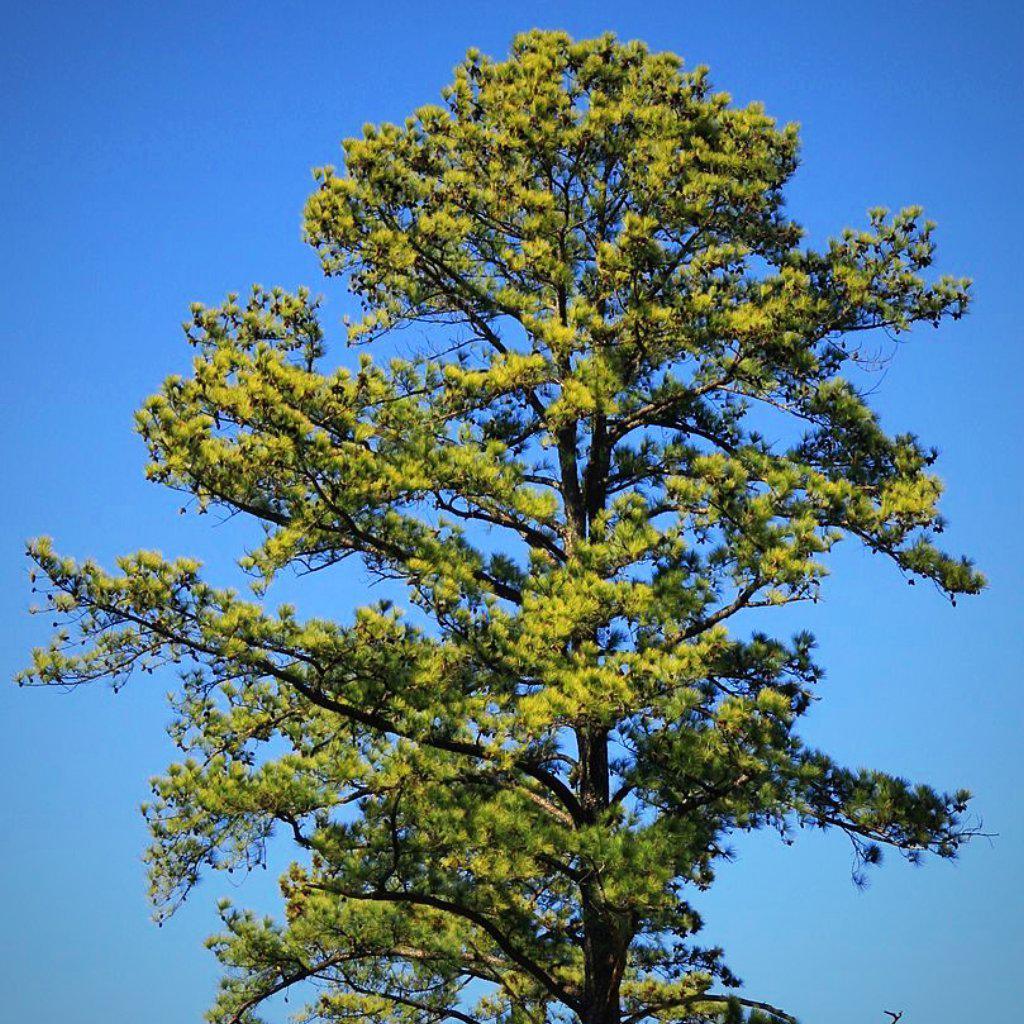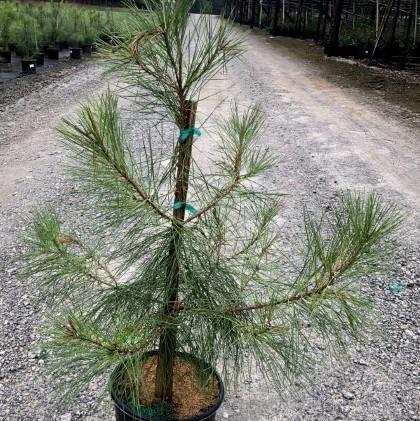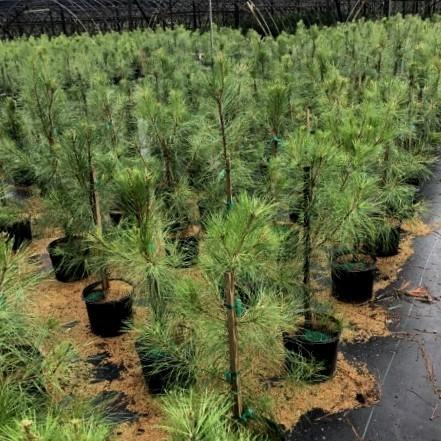Loblolly Pine
Pinus taeda
- In stock, ready to ship
- Backordered, shipping soon
- Locally Grown
The Loblolly Pine, scientifically known as Pinus taeda, is a large and fast-growing evergreen tree native to the southeastern United States. It is one of the most commercially important pine species in the region and is commonly found in forests, plantations, and landscapes.
The Loblolly Pine is known for its tall and straight trunk, reaching heights of 80 to 100 feet or more. It has a pyramidal shape when young, gradually developing a more rounded crown as it matures. The bark is thick, reddish-brown, and deeply furrowed.
The needles of the Loblolly Pine are long and slender, measuring about 6 to 9 inches in length. They are arranged in bundles of three and have a dark green color. The needles persist for about two to three years before shedding.
This pine tree produces small, oval-shaped cones that are about 2 to 4 inches long. The cones start out green and eventually turn brown as they mature. They release their seeds and disintegrate, allowing for natural regeneration.
Loblolly Pines are adaptable to a variety of soil types, including sandy, loamy, and clay soils. They prefer full sun and can tolerate a range of moisture conditions, from wet to moderately dry. However, they are most commonly found in areas with well-drained soils.
Due to its fast growth rate, the Loblolly Pine is often used in reforestation efforts, timber production, and windbreaks. It also provides habitat and food for various wildlife species, including birds and mammals.
If you're considering planting a Loblolly Pine in your landscape, make sure to provide enough space for its mature size. It can be a majestic addition to large properties, parks, or natural areas, offering shade, visual interest, and ecological benefits.
|
Type: |
|
|
Origins: |
Southeast N. America; GA Native |
|
Height: |
40' - 90' |
|
Spread: |
20' - 40' |
|
Spacing: |
30’ |
|
USDA Hardiness Zone: |
6 - 9 |
|
Culture: |
|
|
Bloom Color: |
N/A |
|
Season of Interest: |
MAINTENANCE NEEDS: Low maintenance plant. Susceptible to southern pine beetle and pine engraver beetle. Rust and rots may occur.
LANDSCAPE USES: Specimen or mass plantings, Naturalized Areas, Woodland Garden, Ponds and streams, Shade Tree, and Screening.
COMPANION PLANTS: Ginko, Japanese Maple, Magnolia
IMAGE: Dcrjsr, Pinus taeda loblolly pine large crown, CC BY 3.0
Hahira Nursery takes pride in growing high-quality, fresh, healthy plants and ensuring they are delivered safely, on time, and with little to no damage so they are ready to be planted.
Despite all of our best efforts, once the plants have left our nursery, there are many variables outside of our control that can cause plants, flowers, trees, shrubs, or grasses to not thrive as they should. Plants are living organisms and are susceptible to a number of different environmental and care factors that are outside of our control.
Our goal is to build strong relationships with our customers and we always want to make things right, but we cannot always guarantee what happens once the plants are outside of our nursery, how you care for the plants, if they’re in the correct growing zones, weather damage, soil conditions, insect infestations, etc..
If you have any questions or concerns about a purchase you’ve made, please email us at info@hahiranursery.com and we will work with you on a case-by-case basis to the best of our ability.
Please note that all living organisms are not identical and their coloring, size, and shapes may differ from what you see online in our store. Each plant has its own characteristics that are impacted by the time of year, growth cycle, weather, and other elements which will cause them to look different than their photos.









